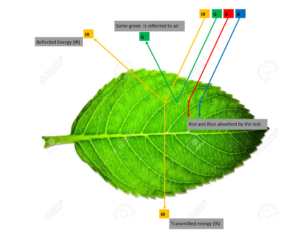Lithological mapping is identifying, analyzing, mapping, and interpreting minerals. Lithological mapping involves studying a wide area, defining the characteristics of the natural mineral rocks and their formation. Remote sensing technique has a significant meaning to Lithological mapping, and thus it is instrumental to this field.
Remote sensing has numerous applications in Lithological mapping. Some of these applications are described below.
1. Mapping Mineral grounds
The mapping of mineral grounds initiates the whole process of lithological mapping. Remote sensors have eased identifying and mapping areas that are rich in minerals. Since they are airborne tools, they can monitor a wide area and take images of the ground view. Geologists analyze the sensed data and produce information that can use to map areas that contain mineral rocks.
2. Classification of surficial features
Surficial features come in different forms and types. Modern tools are used to capture and classify these features to categorize them. A remote sensor is a powerful tool in collecting data used in classifying surficial features. Also, remotely sensed images can show the boundaries between these surficial features.
3. Mineral exploration
Remote sensing is a mighty tool for identifying the mineral grounds and providing necessary information to the miners. It saves time and cost as its images can be analyzed and show where minerals are located. Similarly, remote sensing tools are used during the mining process to provide security and monitor the mining sites. Therefore, this technique is vital in the mining industry. Therefore, the remote sensing technique is a vital tool in lithological mapping.
4. Extracting lithological boundaries
Remote sensed data play a major role in drawing lithological boundaries. Spatial variation information derived from remote sensors forms a rigid basis for identifying and drawing lithological boundaries. Remote sensing tools can detect edges since they are equipped with edge detention algorithms. Interpreters then use the collected information to draw boundaries of the selected region manually.
5. Locating the study area
During lithological mapping, researchers experience problems identifying the suitable area to carry out their mapping process. Thankfully, the remote sensing technique has saved them from all these problems. Remote sensors are space-based tools, and therefore they can ease the process of collecting grounds data. Satellite images are used to conclude the suitable areas of study.
6. Producing lithological maps
Most researchers rely on already existing maps in their process of lithological mapping. Various tools are employed to come up with these maps. Remote sensors tools such as hyperspectral sensors can capture the ground features and deduce data used in the map-making process.
7. Lithological hazards mapping and detention
Like in other fields, the Lithological field is also affected by hazards. Remote sensing tools provide researchers with modern tools for detecting hazards caused by their operation. It helps to control and reduce the risks of hazardous activities from occurring.
8. Updating Lithological inventories
Researchers greatly rely on remote sensing tools as their data-collecting tools. The collected data is then stored in inventories for future use.



